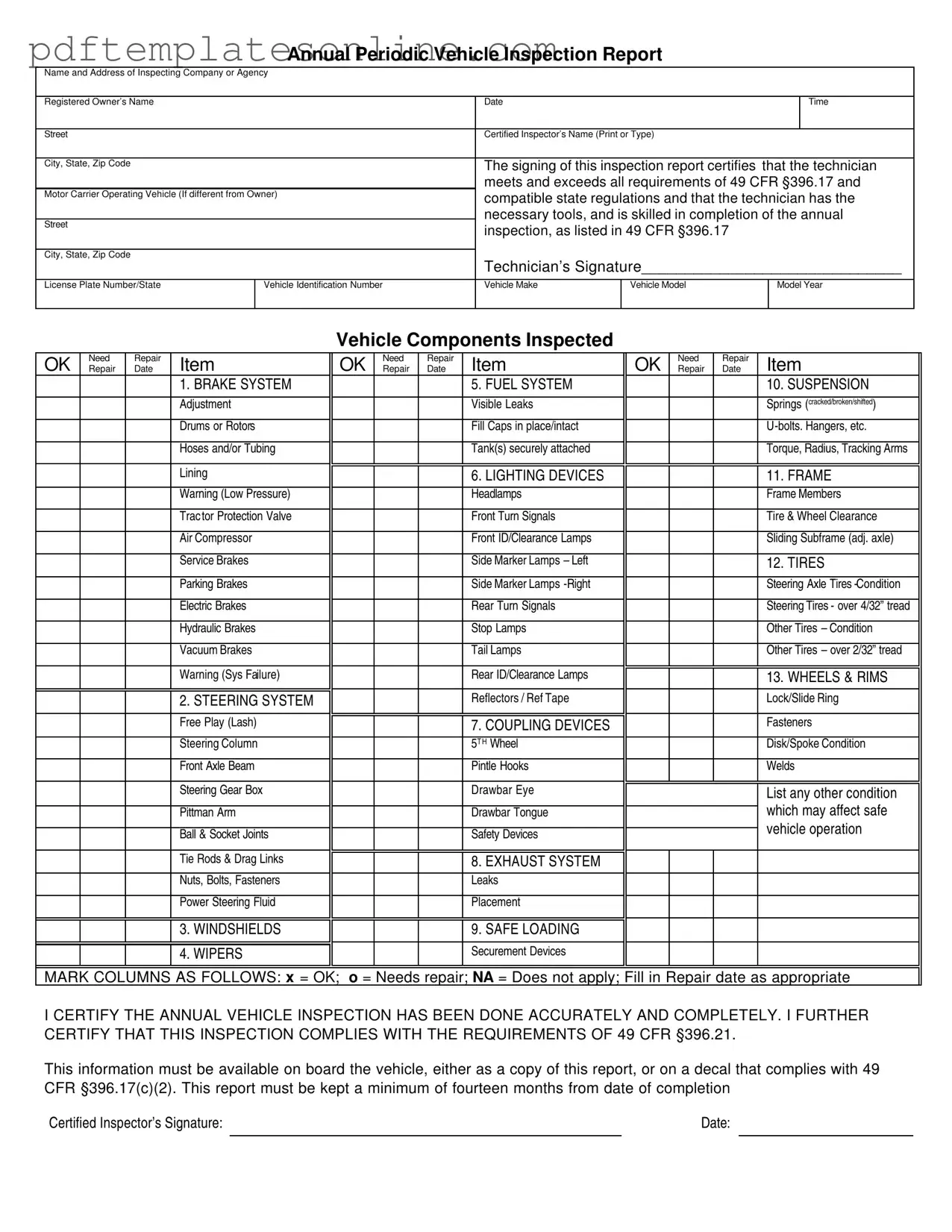Filling out the DOT Vehicle Inspection form accurately is crucial for ensuring compliance and safety. However, many individuals make common mistakes that can lead to complications. One frequent error is failing to provide the correct name and address of the inspecting company or agency. This information is essential, as it identifies who conducted the inspection and can be referenced in case of any issues.
Another common mistake involves not including the registered owner's name and details accurately. This can create confusion about ownership and responsibility for the vehicle. Additionally, some individuals neglect to record the date and time of the inspection. Without this information, it becomes difficult to track the inspection history of the vehicle.
Many people also overlook the importance of the certified inspector's name. This signature verifies that a qualified technician performed the inspection. Failing to include this detail can raise questions about the validity of the inspection. Furthermore, some may forget to fill in the vehicle identification number (VIN) or license plate number. These identifiers are crucial for linking the inspection report to a specific vehicle.
When it comes to marking the inspection items, individuals often make the mistake of not using the correct symbols. The form requires specific markings: an "x" for items that are okay, an "o" for those needing repair, and "NA" for items that do not apply. Misusing these symbols can lead to miscommunication about the vehicle's condition.
Another area where mistakes frequently occur is in the repair dates. Individuals sometimes forget to fill in these dates or provide incorrect ones. This can hinder tracking the maintenance history and may lead to compliance issues down the line. Additionally, some inspectors fail to list any other conditions affecting safe vehicle operation. This oversight can result in significant safety risks.
In terms of qualifications, individuals might not check all applicable categories under the inspector qualifications section. Omitting relevant training or experience can lead to questions about the inspector's competency. Lastly, some people forget to sign the form or provide the date. This final step is essential for certifying that the inspection was completed accurately and in compliance with regulations.
By being aware of these common mistakes, individuals can ensure that they complete the DOT Vehicle Inspection form correctly. Attention to detail not only helps in maintaining vehicle safety but also ensures compliance with federal regulations.
